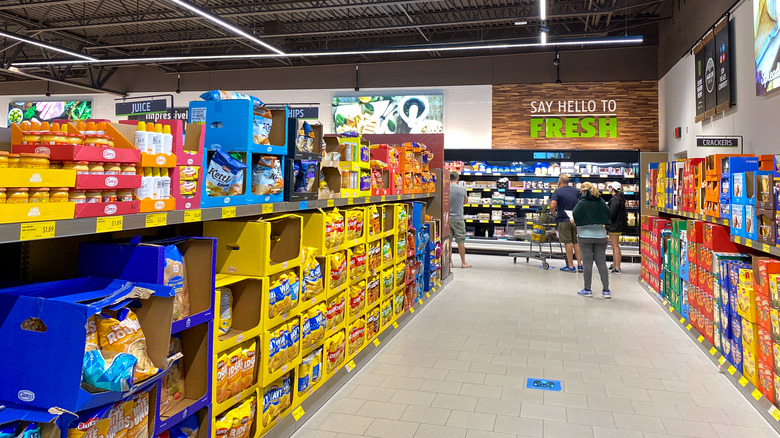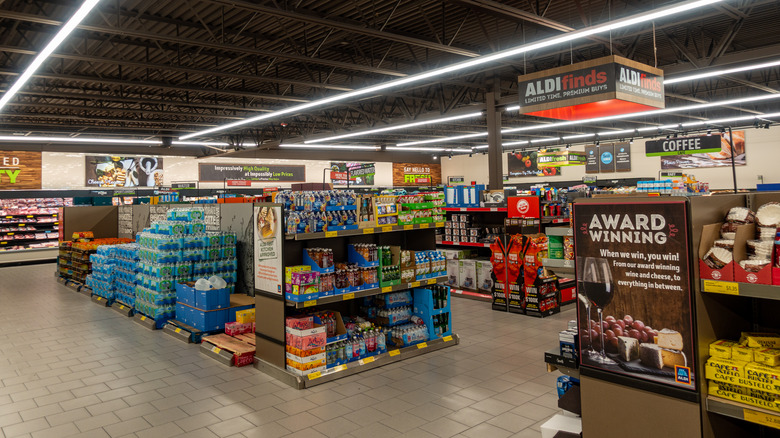The Reason Aldi Stores Have So Few Aisles
One thing that makes shopping at Aldi so popular — besides the deep discounts on groceries, of course — is the fact that a shopper can get in and out of there in under half an hour, which is never the case when we're wandering the aisles of a mega-market. As it happens, Aldi's limited number of aisles and its low, low prices are connected. While the chain employs a variety of cost-cutting measures such as a BYO bag policy and stocking store-brand goods in preference to pricier name brands, its smaller footprint also helps the chain — and the customer — save money. Aldi's smaller size means fewer aisles and lower prices.
One of the main reasons why Aldi is able to charge less for its groceries than its competitors is because its operating costs are significantly lower. Having a smaller footprint helps contribute to this, beginning with store construction — the average Aldi costs about $1.5 million to build, whereas a standard-sized grocery store can cost over $6 million. Smaller buildings also mean lower utility costs, plus there's the fact that these stores can be staffed with fewer employees. Aldi's half-dozen aisles, as opposed to the 12 to 20 that you might find in a larger supermarket, allow customers to shop more quickly, too. This efficiency must be good for the bottom line, since Aldi's continuing expansion of its small stores now has it ranked among the nation's largest grocery chains.
Even the larger Aldi stores have few aisles
Aldi's low prices have garnered a lot of devoted fans, or Aldi nerds, who share their opinions on all things Aldi on social media. This includes an in-depth conversation on the sizes (and number of aisles) of various Aldi stores. In one Reddit thread, the OP noted that not all of the Aldis they visited appeared to be the same size, and others in the comments thread concurred with this observation. They decided that the size difference may depend on whether the store is using re-purposed space, whether it's free-standing or in a strip mall ones, or the date it was built. Some Aldis are so small they only have four aisles (and, alas, no Aisle of Shame).
Aldi's corporate website lists the average store size as being 10,650 square feet of sales floor. Several newly-built Aldis are quite a bit larger, however, including a store in Philadelphia that has 22,000 square feet of sales space. It does seem, though, that even these super-sized stores are kept to the standard six-aisle format. This is good news for anyone who'd rather not see Aldi morphing into a mega-chain, since the small-store convenience is a large part of its charm.

